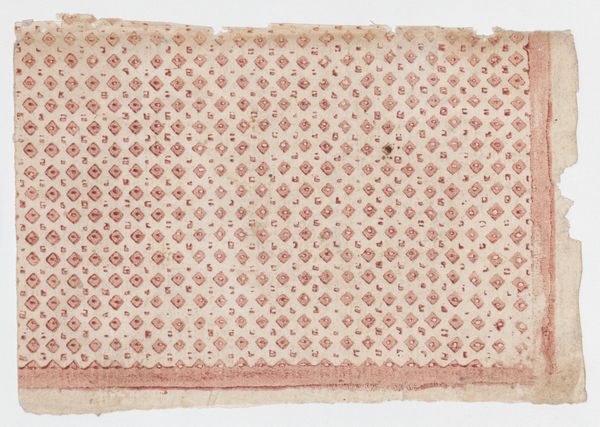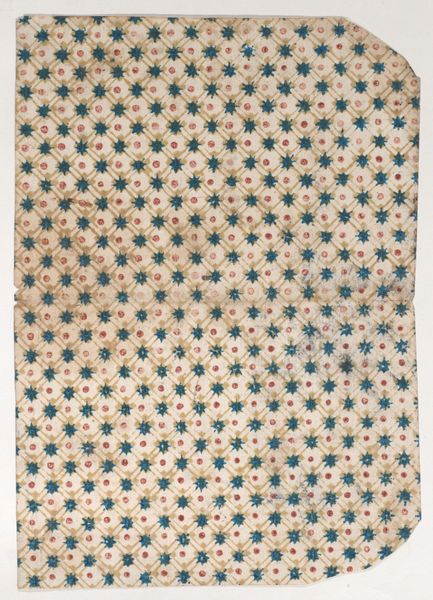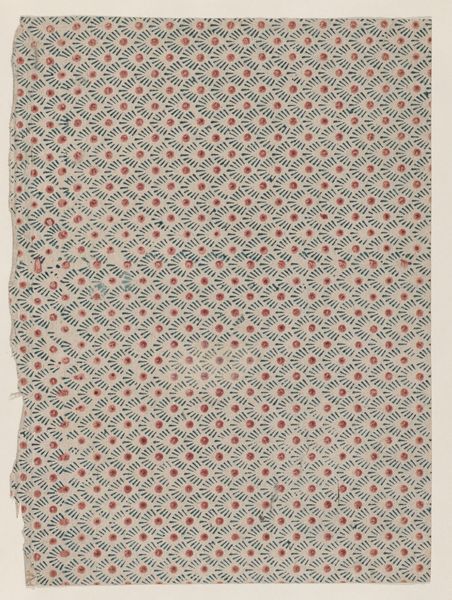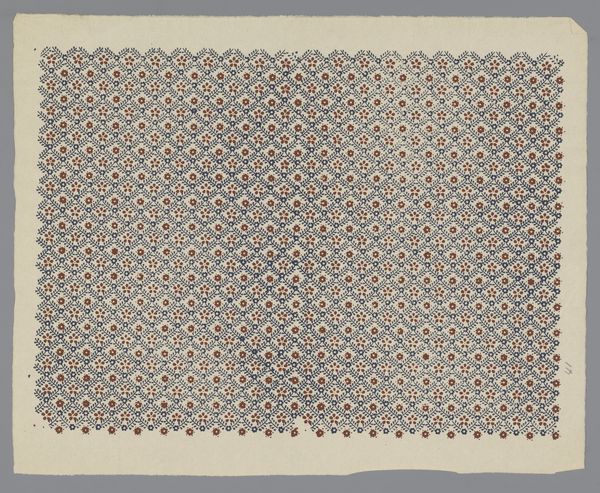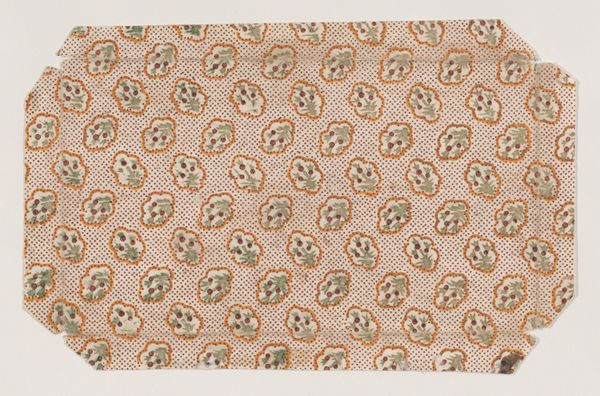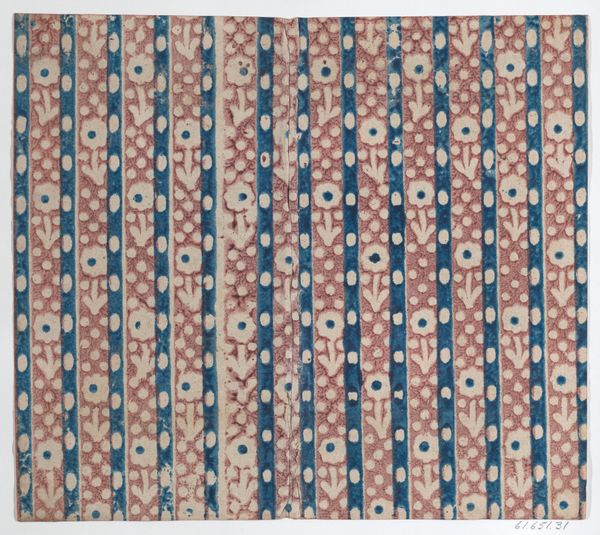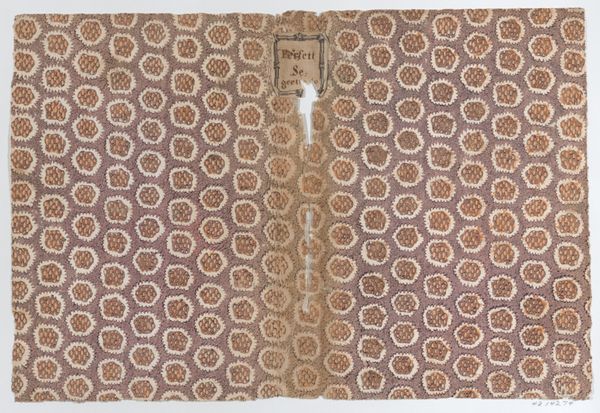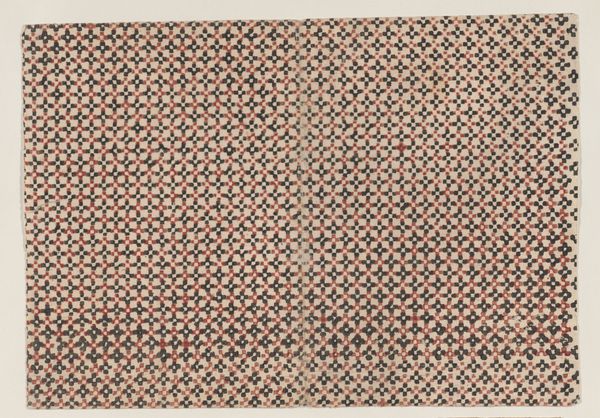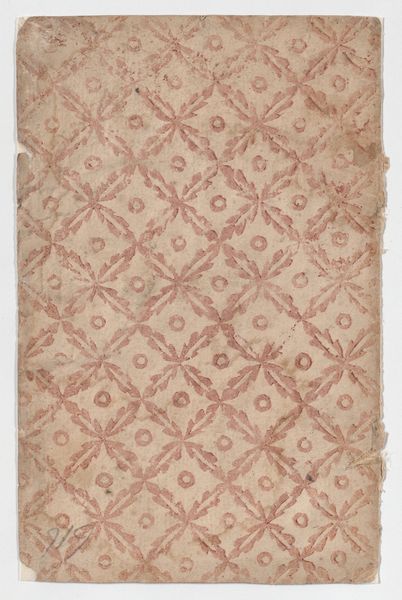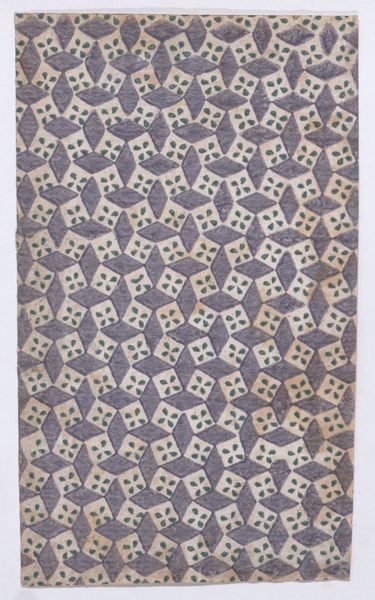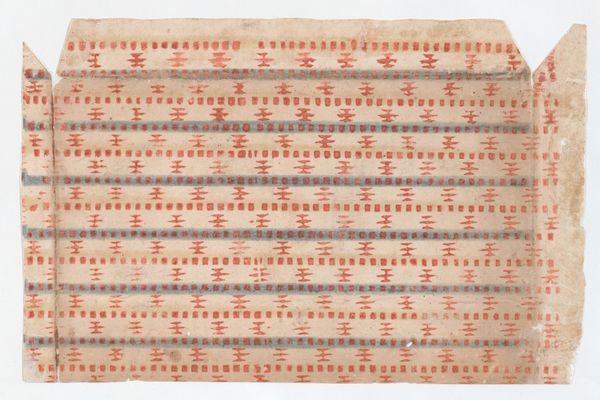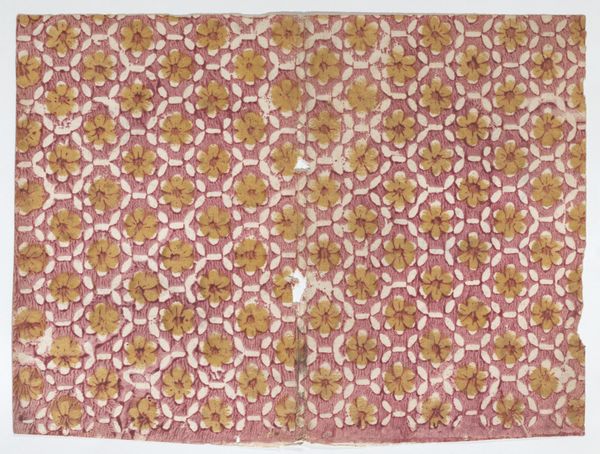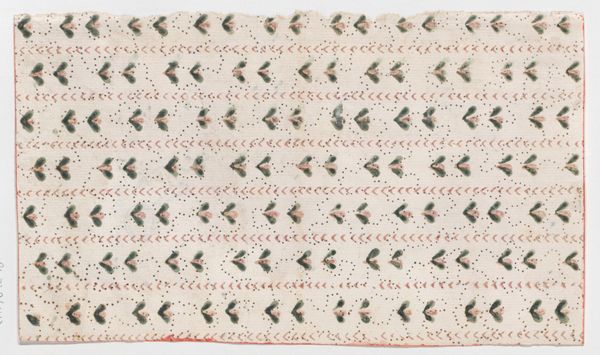
drawing, print, textile
#
drawing
#
organic
# print
#
textile
#
organic pattern
#
pattern repetition
#
textile design
Dimensions: Sheet: 8 3/4 × 12 5/8 in. (22.3 × 32.1 cm)
Copyright: Public Domain
Curator: I find this textile so visually comforting. Its repeated motif evokes feelings of tranquility, almost meditative. Editor: I am looking at “Sheet with overall dot and abstract pattern,” dated to sometime between 1800 and 1900. While attributed to an anonymous maker, it's part of the Metropolitan Museum of Art’s collection here in New York. This work in drawing and print demonstrates what looks like early textile design techniques. Curator: Tell me more about that repeated pattern – what cultural or psychological symbols do you see reflected within? Editor: Well, I think this is a great case study for exploring intersectionality. Patterns are rarely "just" decorative. What do the dots mean when placed so uniformly around these ringed abstract shapes? This might offer a visual representation of communities – a collection of distinct individuals that nonetheless operate and relate to a shared cultural core. We need to ask, during this era, what was the social context that allowed such art to thrive. Curator: That rings true – and certainly connects it to broader artistic traditions throughout human history. For instance, recall the power of ancient mandala patterns, or even heraldic symbols deployed across vast expanses of textiles, to express societal structures or psychological values. In our present context, this abstract pattern can offer new insight into design within various cultures. I can imagine people in this era experiencing security, unity and peace through the consistent use of design and visual language. Editor: That's fascinating. Considering this was created between 1800 and 1900, we could consider this pattern from a gendered lens. In the context of emerging textile factories, one wonders to what degree such patterns helped promote class solidarity, gender identity, labor policies, or colonial ideologies that continue to manifest to the present day. Curator: An incredibly astute perspective! Seeing those historical through-lines helps enrich how we read the fabric’s emotional and conceptual layers. It prompts a more rigorous exploration of our present relationship with these aesthetic lineages. Editor: Indeed, analyzing art through this kind of framework really deepens the meaning, connecting aesthetic experiences to profound cultural conversations.
Comments
No comments
Be the first to comment and join the conversation on the ultimate creative platform.
